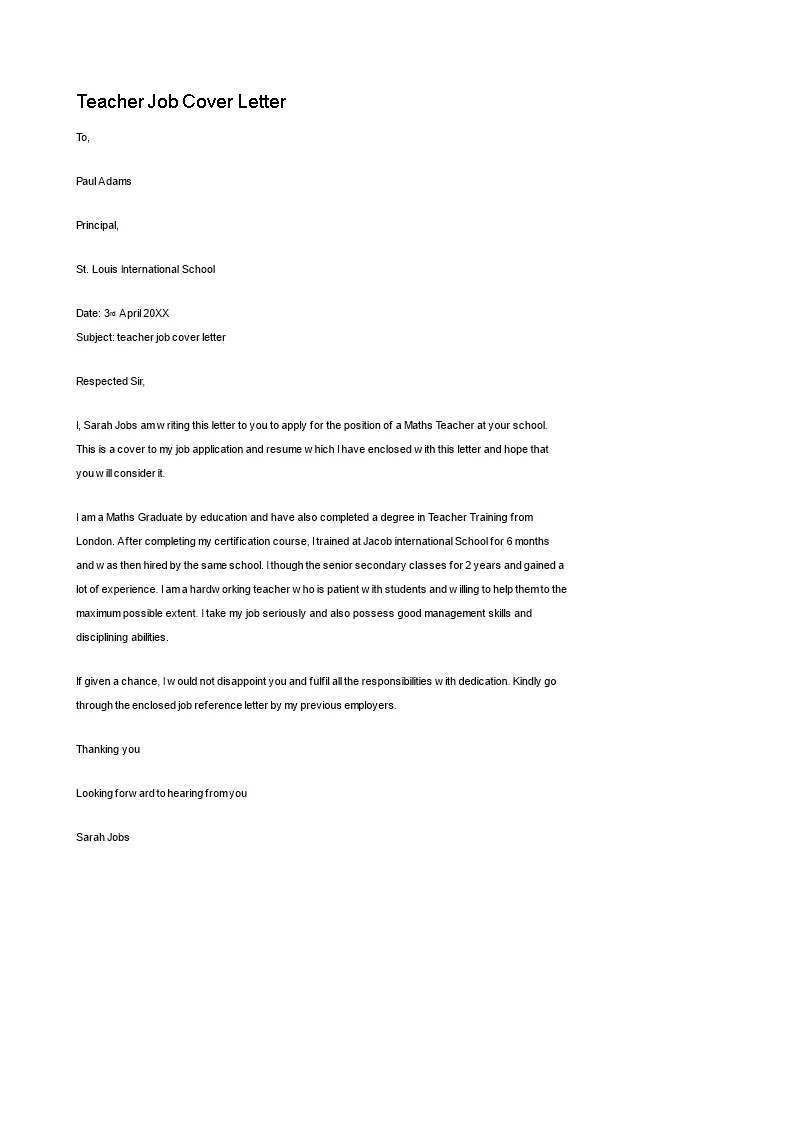Understanding the Importance of a Teaching Cover Letter
A teaching cover letter is more than just a formality it’s your opportunity to make a strong first impression and set yourself apart from other candidates. In a competitive job market, a well-crafted cover letter can be the key to landing an interview. It allows you to showcase your unique skills, passion for teaching, and relevant experience in a way that a resume alone cannot. Therefore, investing time in creating a compelling cover letter is a crucial step in your job search.
Why a Great Cover Letter Matters
A great cover letter has the power to significantly increase your chances of getting hired. It goes beyond simply listing your qualifications; it tells a story. It’s where you can connect with the hiring committee on a personal level, demonstrating your enthusiasm and suitability for the role. This is your chance to shine and reveal the ‘why’ behind your desire to be a teacher at that specific school. Failing to provide a solid cover letter can be a missed opportunity.
Impact on First Impressions
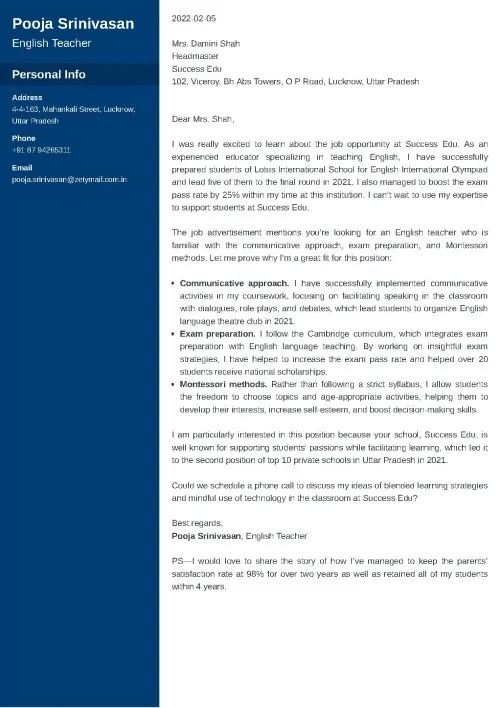
First impressions matter immensely. Your cover letter is often the first interaction a potential employer has with you. It sets the tone and dictates whether they will even read your resume. A well-written letter showcases your professionalism, attention to detail, and communication skills, all essential qualities for a teacher. A poorly written one can lead to immediate rejection.
Demonstrating Passion and Personality
A cover letter gives you the space to express your passion for teaching and let your personality shine through. While your resume lists your achievements, your cover letter allows you to discuss why you chose education as a career, what motivates you, and what unique qualities you bring to the classroom. This human element is often what makes the difference when comparing candidates.
Key Components of an Outstanding Teaching Cover Letter
To make your cover letter stand out, focus on these core components. Including these elements ensures that you cover all the essential points and provide the hiring committee with a comprehensive overview of your capabilities and how well you match the job requirements. A well-structured letter is easy to read and highlights the most important information.
Contact Information and Formal Greeting
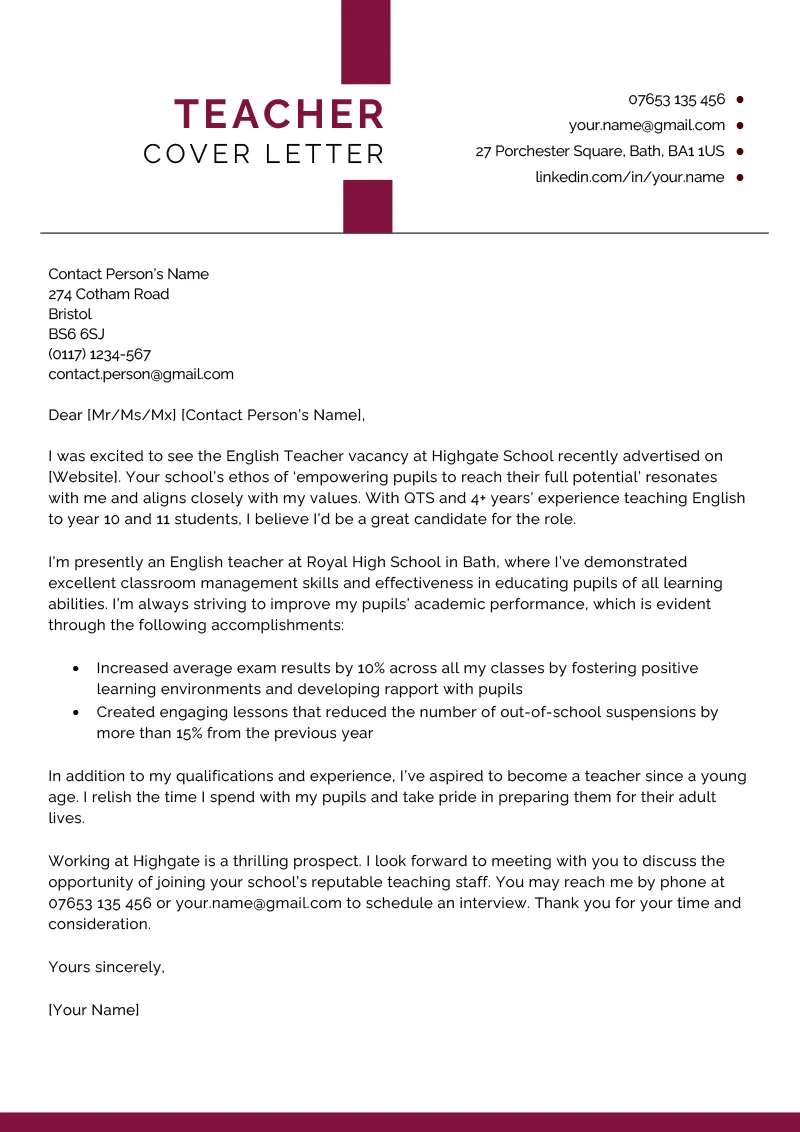
Begin with your contact information at the top of the letter. Include your name, address, phone number, and professional email address. Then, address the hiring manager directly. If possible, find out the name of the person responsible for hiring. Addressing the letter to a specific person shows that you’ve done your research and you care about the role. A generic ‘To Whom It May Concern’ is a sign of laziness.
Crafting a Compelling Opening Paragraph
The opening paragraph is your hook. It should immediately grab the reader’s attention. Start with a statement of your intent and express your interest in the specific teaching position. Briefly mention where you saw the job posting and why you are excited about this particular opportunity. Show enthusiasm. Mentioning something specific about the school or its mission indicates you have done your research.
Highlighting Relevant Skills and Experience
The body of your cover letter is where you highlight your skills and experience. Tailor this section to match the job description. Instead of simply listing your qualifications, provide concrete examples of how you’ve applied those skills in the classroom. Use the STAR method (Situation, Task, Action, Result) to describe your accomplishments. This shows, not just tells, the hiring manager what you can do.
Quantifiable Achievements and Impact
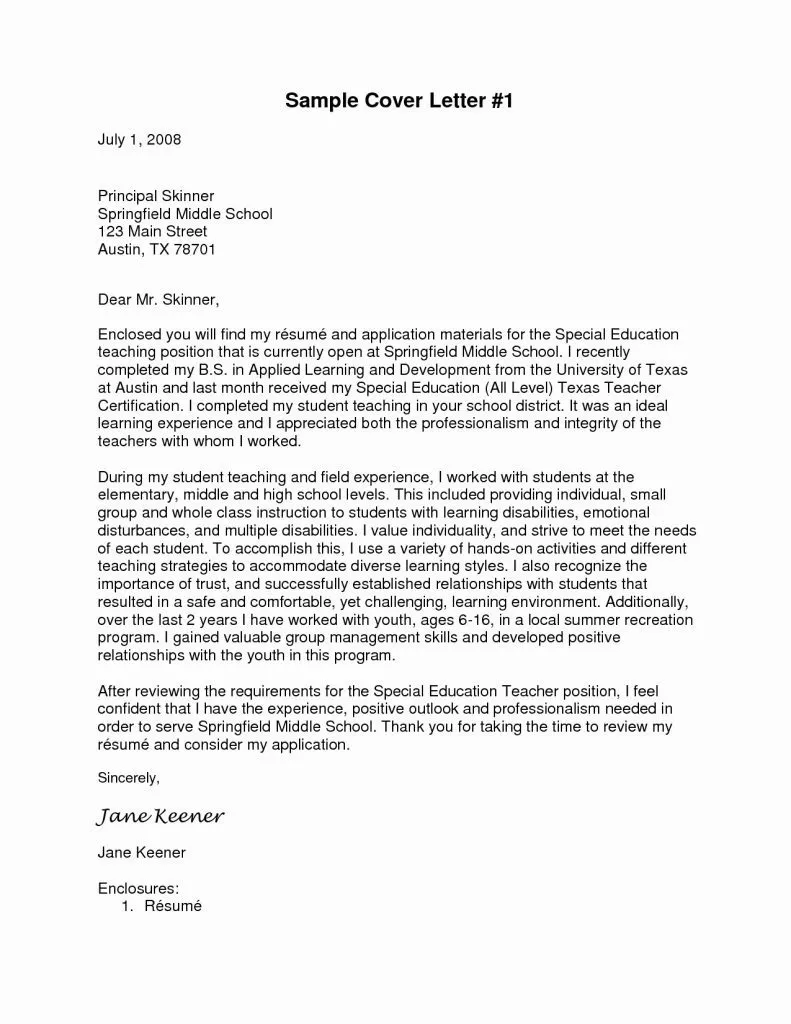
Whenever possible, quantify your achievements. Instead of saying ‘improved student test scores,’ state ‘increased student test scores by 15% within one year.’ This demonstrates your impact. Include any awards, recognition, or positive feedback you have received from parents or colleagues. Numbers and concrete examples prove your value as a teacher.
Tailoring the Letter to the Specific Job
Customize your cover letter for each job application. Review the job description carefully and identify the key skills and qualifications the school is seeking. Then, ensure your cover letter highlights those skills and qualifications using relevant examples. This personalized approach demonstrates that you’ve taken the time to understand the school’s needs and are a perfect fit.
Showcasing Your Teaching Philosophy
Your teaching philosophy is a critical component of your cover letter. It explains your beliefs about education and how you approach teaching. Briefly describe your teaching style, your classroom management strategies, and your approach to student engagement. Showcase what you bring to the table and your commitment to student success.
Expressing Enthusiasm and Closing
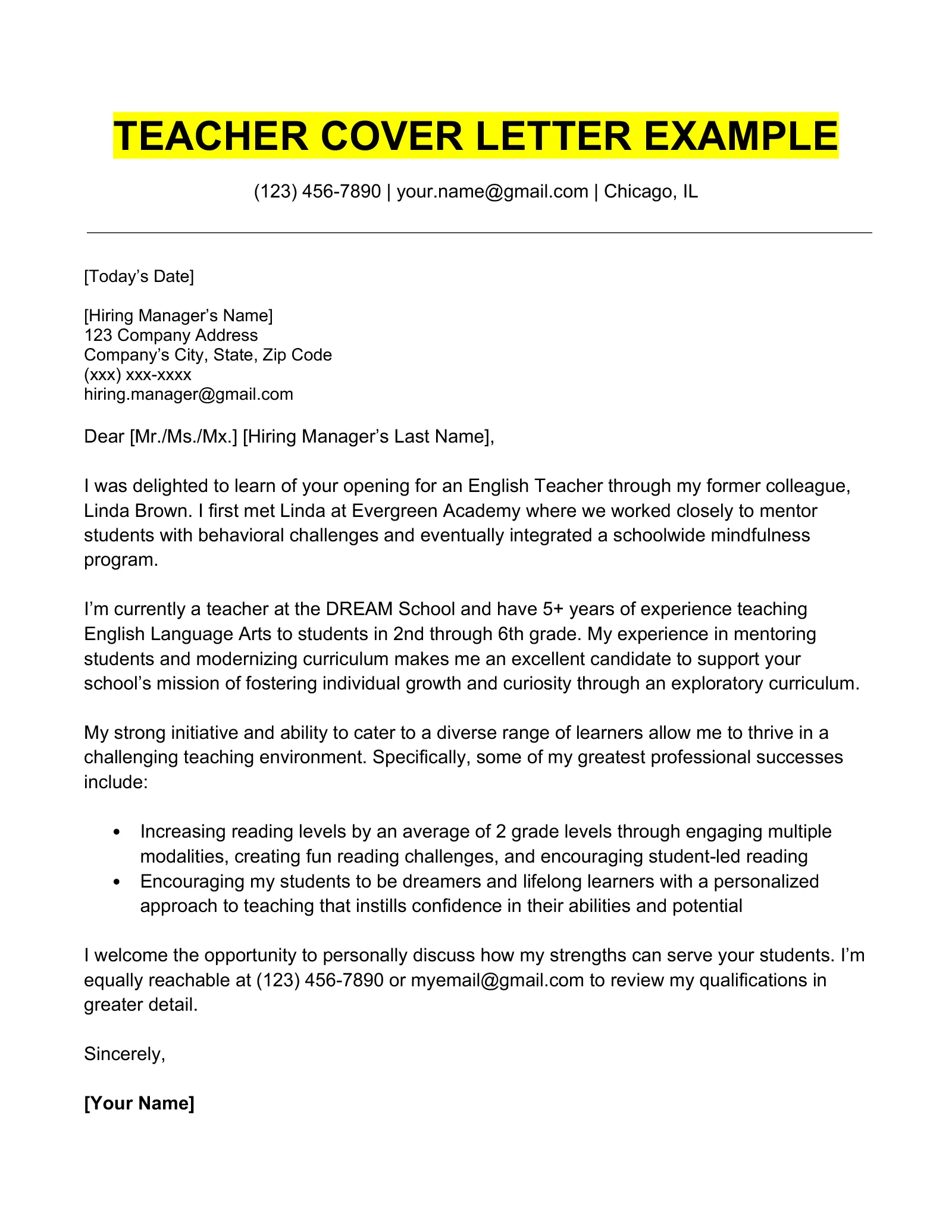
Conclude your cover letter by reiterating your interest in the position and expressing your enthusiasm for the opportunity. Thank the hiring manager for their time and consideration. Include a call to action, such as ‘I would welcome the opportunity to discuss my qualifications further in an interview.’ End with a professional closing, such as ‘Sincerely’ or ‘Respectfully’.
Formatting and Proofreading for Professionalism
Professionalism is crucial. Ensure your cover letter is free of errors and is formatted clearly. Pay close attention to details such as font choice, spacing, and grammar. A well-formatted and error-free cover letter conveys that you are organized, meticulous, and committed to excellence.
Font Choice and Readability
Choose a professional, easy-to-read font, such as Times New Roman, Arial, or Calibri. Use a font size between 10 and 12 points. Maintain consistent spacing throughout the document. Use clear headings and subheadings to break up the text and improve readability. An easy-to-read cover letter is much more likely to keep the attention of the hiring manager.
Proofreading and Editing Process
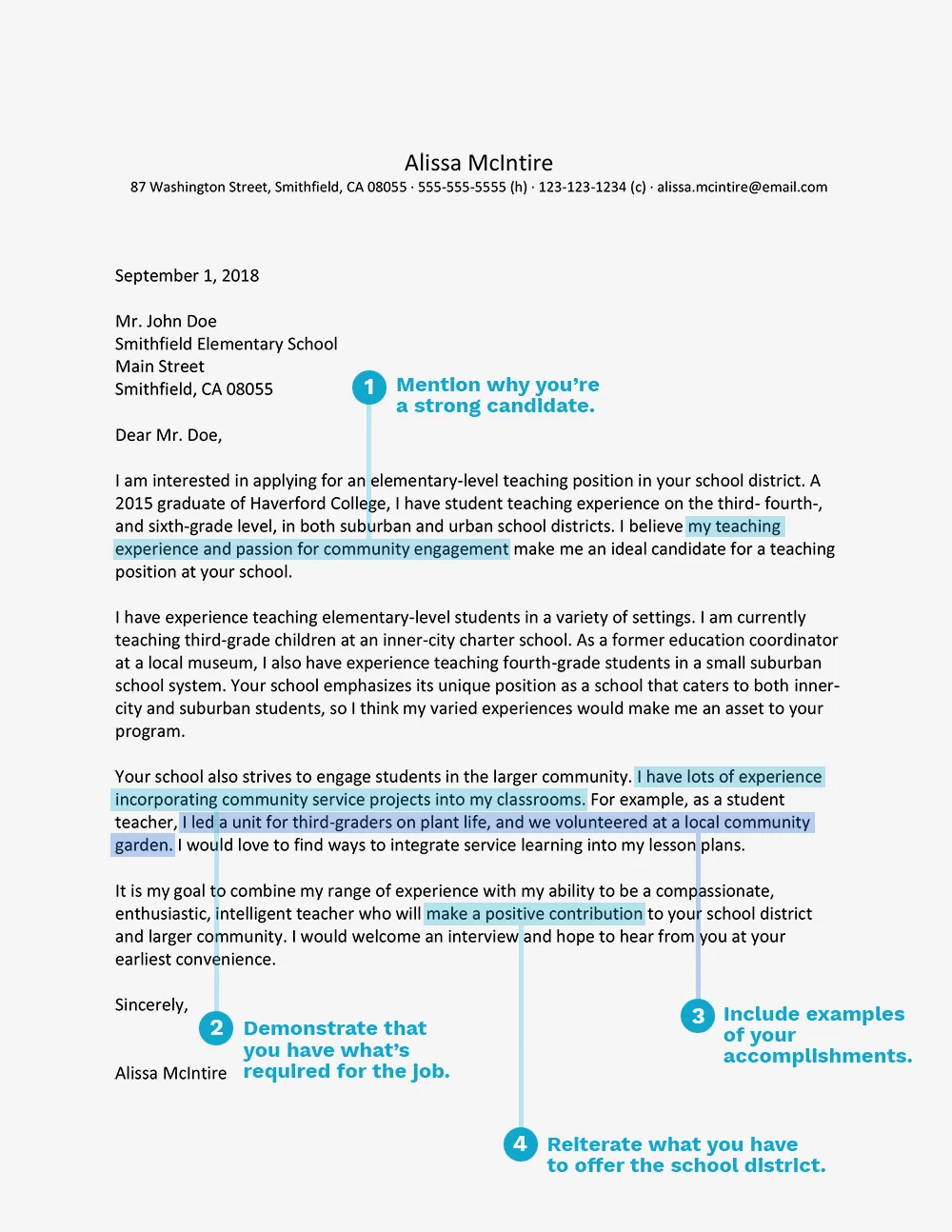
Thoroughly proofread your cover letter multiple times. Check for spelling errors, grammatical errors, and typos. Read the letter aloud to catch awkward phrasing. Ask a friend, colleague, or mentor to review your letter for feedback. Fresh eyes can often spot mistakes that you might miss. Make sure the tone is appropriate and reflects your personality.
Adapting Your Cover Letter to Different School Types
Adjust your cover letter to match the specific type of school to which you are applying. Different schools may have unique cultures, values, and needs. By customizing your cover letter, you show that you understand those specific needs and are a suitable fit.
Cover Letters for Elementary, Middle, and High School
Tailor your cover letter to the age group you wish to teach. Highlight the skills and experiences most relevant to the age of the students. For example, an elementary school teacher might emphasize classroom management, creativity, and the ability to build relationships with young children. A high school teacher should emphasize their subject matter expertise, their ability to engage older students, and their capacity to foster critical thinking. Focus on what is most relevant.
Cover Letters for Private and Public Schools
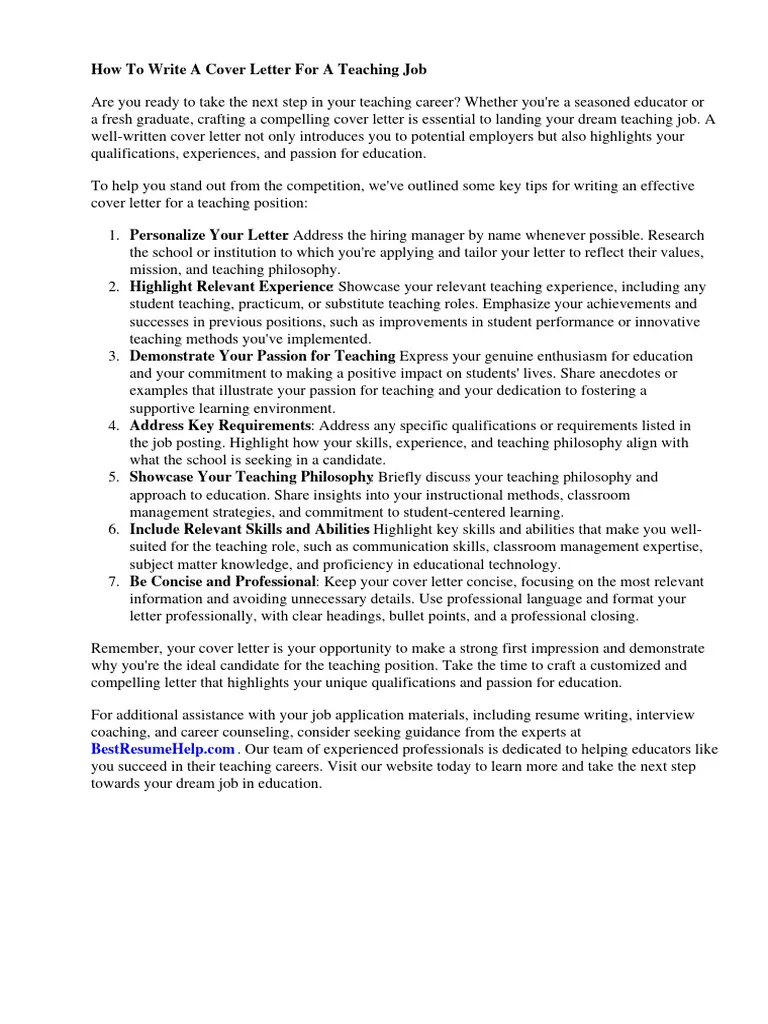
Private schools often have a specific mission or philosophy. Research the school’s values and tailor your cover letter to demonstrate how you align with those values. Public schools may have a different focus. Highlight your ability to work within the school’s policies and contribute to the school’s overall goals. Show that you are the right fit for the school’s culture.
Common Mistakes to Avoid in Your Cover Letter
Avoid these common mistakes to increase your chances of success. Being aware of these potential pitfalls allows you to prevent them, leading to a more professional and impressive cover letter. Making a good impression involves avoiding obvious errors.
Generic or Vague Language
Avoid using generic or vague language that could apply to any teacher. Instead, provide specific examples and use concrete details to illustrate your skills and experience. Use action verbs and avoid clichés. Generic statements do not showcase your unique skills.
Focusing Solely on Your Needs
While it’s important to express your interest in the position, don’t make your cover letter all about your needs. Focus on how you can contribute to the school and the students. Frame your experience in terms of the value you will provide the hiring manager. Employers are looking for teachers who can benefit their school.
Typos and Grammatical Errors
Typos and grammatical errors are a major turnoff. They suggest a lack of attention to detail and a lack of professionalism. Carefully proofread your cover letter, and consider using a grammar checker. Having another person review your letter can help you catch errors you might miss. Careful proofreading is a must.
Resources and Further Tips
There are many resources available to help you write a compelling cover letter. Online templates can serve as a starting point, but always tailor the letter to your specific situation. Professional career services and writing coaches can offer valuable feedback and guidance. Research successful cover letters from other teachers. Keep learning about how to showcase your strengths.
In conclusion, a well-crafted teaching cover letter is a powerful tool that can significantly boost your chances of landing your dream job. By understanding its importance, incorporating key components, and avoiding common mistakes, you can create a cover letter that effectively highlights your skills, passion, and suitability for the role. Good luck with your job search!
